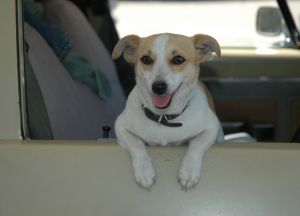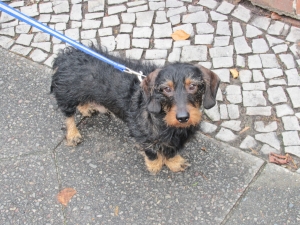 Getting the opportunity to let your dog play with a fellow canine is always a fun experience. Firstly, your dog is socializing, but secondly, your dog gets exhausted, and any dog owner will welcome that!
Getting the opportunity to let your dog play with a fellow canine is always a fun experience. Firstly, your dog is socializing, but secondly, your dog gets exhausted, and any dog owner will welcome that!
But sometimes playtime looks an awful lot like fighting, and it may sound that way too. But is that just your dog being a dog? Are you being overprotective? Or is it time to end the game?
How can you tell the difference between dog fighting and dog playing?
Starting it off
Many times, in dog-speak, a dog that wants to play will actually pitch the idea to his potential playmate with a “play bow.” It’s basically your dog’s way of saying that he wants to play, so all that biting and messing around that’s about to happen, well, that’s all in good fun. If you see your dog (or another dog) do this bow, then you should feel pretty safe that what they’re about to do is harmless (at least for the time being).
During playtime don’t be surprised to hear growling and see bared teeth. Yes, you might see those things happen when your dog is angry, however, there are variations of growls and bared teeth that will help you determine if your dog means business or is just having a good time.
If your dog is growling with a high pitch, then he’s likely excited and gleeful, thus he’s in play mode. If that growl deepens, well, that’s a sign that playtime is escalating into something a bit more fierce.
Dogs bite and bare their teeth, even in play mode. Actually, nipping is an important part of playtime to help your dog control his biting tendencies (if he nips too much, too hard, or too close to somewhere like a dog’s face, he’ll probably be welcomed with a reprimand). Monitor your dog’s growling to see if that nipping is becoming more like biting.
The movement of playtime
Dogs in play mode are constantly moving. There is no “standoff.” There’ll be running twisting, leg pumping and more. There’ll be dogs laying on the ground, and exposing their bellies. All of these are signs of playtime.
On the flipside, if your dog (or the dog he’s playing with) stops moving so much, has raised hackles and a deep growl, then you know a fight is likely brewing.
Some tips to keep the peace
Keep playtime to two dogs, not three. Three’s a crowd and makes the whole “predator/prey” thing become a bit confusing. Also, when you have more than two dogs you’re bound to have one of them get ganged up on, and that can quickly escalate into a fight.
The last tip to realize is that just because your dog didn’t get along with another dog in the past, doesn’t mean they’re destined for doom. It is possible to regain peace among sworn enemies. Whatever you do, don’t let one fight dictate your dog’s life. Keeping your dog away from other dogs will do more harm in the long run than good.





